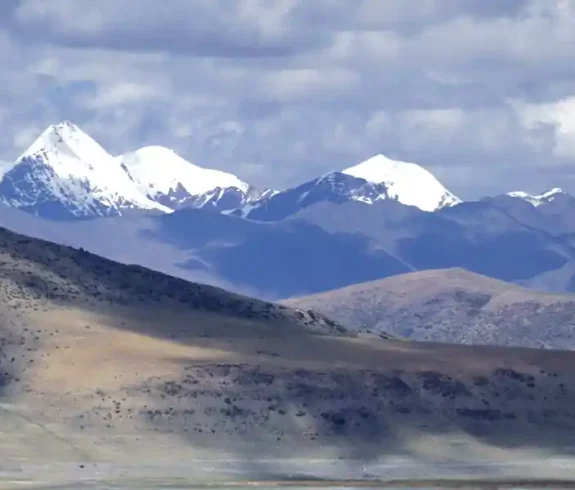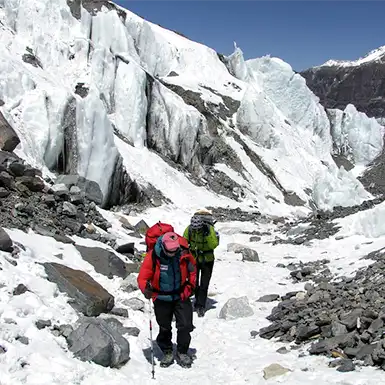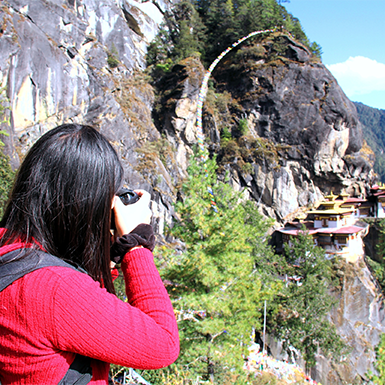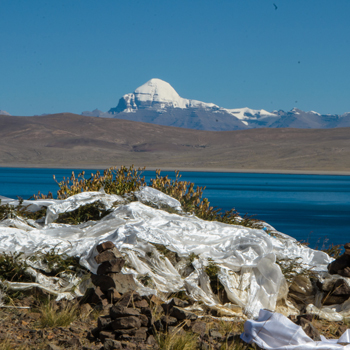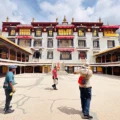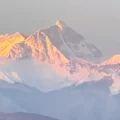The Tibetan Plateau, also known as the “Roof of the World,” is a vast, breathtaking region deep within Central Asia. At an average elevation of about 4,500 meters, it is the largest and tallest plateau on Earth. This geographical marvel boasts staggering mountain ranges like the Himalayas, breathtaking glaciers, and turquoise lakes that shimmer against a boundless sky.
Culturally, the Qinghai Tibet Plateau is a tapestry woven with rich traditions and a deep-rooted connection to Tibetan Buddhism. Monasteries perched atop windswept cliffs, vibrant prayer flags fluttering in the breeze, and the warm hospitality of the nomadic people all contribute to the region’s unique charm.
But there’s another side to the Himalayan Plateau that beckons the adventurous traveler – the chance to explore hidden gems beyond the well-trodden tourist trail. Here’s why venturing off-the-beaten-path on the Himalayan Plateau can be an unforgettable experience:
- Untouched Beauty: Step away from the crowds and discover landscapes untouched by mass tourism. Pristine lakes, tranquil valleys, and remote villages offer a glimpse into the true essence of the Himalayan Plateau.
- Authentic Cultural Encounters: Interact with local communities who preserve their age-old customs and traditions. Witness unique festivals, experience traditional crafts, and better understand Tibetan culture.
- Adventure Awaits: The Tibetan Plateau offers a playground for outdoor enthusiasts. Hike through dramatic landscapes, go on horseback riding expeditions, or challenge yourself with a trek to a remote monastery.
- Unforgettable Memories: Carving your path through the Himalayan Plateau creates a unique and personal travel experience. You’ll return home with stories to share and memories that will last a lifetime.

Tibetan Plateau: A Realm of Diverse Landscapes and Extreme Climates
The Tibetan Plateau is more than just high altitude; it’s a land of dramatic geographical contrasts. Understanding this unique environment is crucial for planning an unforgettable adventure.
A Realm of Diverse Elevations
The Qinghai Tibet Plateau boasts staggering variations in elevation. Towering mountain ranges like the Himalayas pierce the sky, reaching over 8,000 meters. Conversely, vast plains and valleys lie within the plateau, some as low as 3,000 meters. This immense range in elevation creates a mosaic of distinct landscapes.
Impact on Climate
The dramatic elevation changes significantly affect the Himalayan Plateau’s climate. Higher regions experience frigid temperatures year-round, with strong winds and sparse precipitation. Conversely, lower valleys enjoy milder temperatures and even experience a short monsoon season in the southeast.
Planning Your Tibetan Plateau Travel
These diverse landscapes and climates have a significant impact on travel planning and adventure activities:
- Seasonality: The best time to visit the Himalayan Plateau depends on your desired activities. Summer offers comfortable temperatures for trekking in lower regions, while winter transforms the landscape into a wonderland for experienced mountaineers.
- Altitude Sickness: Rapid elevation gain can lead to altitude sickness. Gradual ascents and proper acclimatization are crucial, especially when visiting high-altitude areas.
- Clothing: Be prepared for extremes—pack layers to adapt to the wide temperature variations across the plateau. Due to the high altitude and nighttime chills, include warm clothing, even for summer trips.
- Activities: Choose adventures that suit the specific region and climate. During the summer window, opt for high-altitude trekking in the Himalayas, explore the lower valleys, and participate in cultural festivals during the warmer months.
Unveiling the Himalayan Plateau’s Hidden Gems: Beyond the Tourist Trail
The Himalayan Plateau offers a treasure trove of experiences beyond the usual tourist hotspots. Here, we explore some captivating Tibet Off-the-Beaten-Path destinations that await discovery:
1. Mount Kailash: A Pilgrimage Beyond Compare
Towering over the Qinghai Tibet Plateau at a staggering 6,714 meters, Mount Kailash is a sacred peak revered by followers of Hinduism, Buddhism, Bon, and Jainism. While many pilgrims undertake the classic kora (circumambulation) around the south face, a less-traveled option exists. The inner kora, a more challenging route traversing high-altitude passes, offers a truly immersive experience for seasoned pilgrims and adventure seekers.
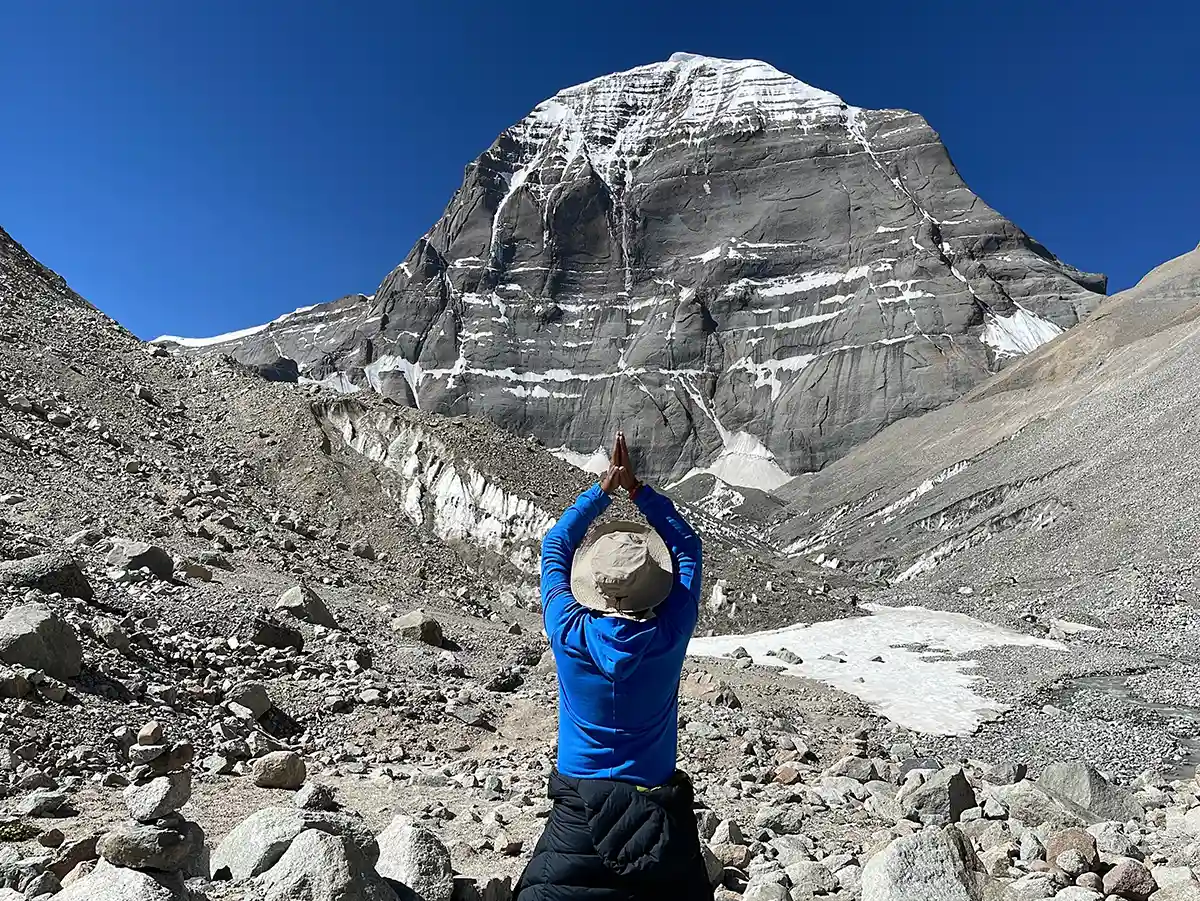
2. Yarlung Tsangpo Grand Canyon: Nature’s Majesty on Display
The magnificent Yarlung Tsangpo River sculpted the Yarlung Tsangpo Grand Canyon, a natural marvel that dwarfs even the Grand Canyon in the United States. This colossal gorge stretches for over 500 kilometers, reaching depths of up to 2,800 meters. While the infrastructure for large-scale tourism is limited, this gives intrepid travelers the chance to take on challenging hikes and capture breathtaking photographs of this dramatic landscape.

3. Nyenchen Tanglha Mountains: A Realm of Treks and Nomadic Encounters
The Nyenchen Tanglha Mountains, a formidable range fringing the northern edge of the Tibetan Plateau, offer a paradise for trekking enthusiasts. With peaks exceeding 7,000 meters, these mountains provide a challenging yet rewarding backdrop for multi-day treks. This region is also home to Tibetan nomadic communities who have preserved their traditional way of life for centuries. Culturally sensitive tours can offer a glimpse into their unique lifestyle and traditions.
4. Chamdo: A Historical and Architectural Gem
Nestled in the eastern reaches of the Himalayan Plateau, Chamdo boasts a rich history dating back to the ancient Zhang Zhung Kingdom. This historic city is a treasure trove of Tibetan architecture, with traditional dwellings and monasteries like the impressive Trashi Lhunpo Monastery showcasing the region’s unique artistic heritage. Chamdo offers a chance to delve into Tibetan history and culture away from the crowds that gather in more well-known destinations on the Qinghai Tibet Plateau adventures.
Unleashing Your Inner Explorer: Adventure Activities on the Tibetan Plateau
The Tibetan Plateau isn’t just a place of breathtaking scenery; it’s a playground for adventure enthusiasts. Here, we delve into exhilarating activities that will heighten your adrenaline and create lasting memories.
1. Conquering the Trails: Trekking Adventures
The Qinghai Tibet Plateau offers a trekker’s paradise, with options catering to all experience levels.
- High-Altitude Challenges: Seasoned trekkers can attempt the classic Everest Base Camp trek or conquer the challenging routes around Mount Kailash.
- Moderate Adventures: Explore the dramatic landscapes of the Kora La or the lesser-known Tso Moriri Lake, nestled amidst stunning mountain ranges.
- Lower-altitude Options: Hike through the picturesque valleys surrounding Namtso Lake or explore the Yarlung Tsangpo Canyon for breathtaking vistas.
Planning Your Trek:
- Permits and Regulations: Obtain necessary permits well in advance, especially for restricted areas like Mount Kailash.
- Local Guides: Hiring experienced Tibetan guides familiar with the terrain and local customs is crucial for a safe and enriching experience.
- Acclimatization: Allow ample time for acclimatization to avoid altitude sickness.
2. Exploring on Horseback: A Unique Cultural Experience
Horseback riding provides a unique method to cross the vast plains of the Himalayan Plateau and experience the nomadic way of life firsthand. Imagine cantering across rolling grasslands, following ancient caravan routes, and stopping by nomadic settlements for a glimpse into their traditions.
Booking Your Horseback Riding Adventure:
- Choose a Reputable Operator: Opt for companies specializing in culturally sensitive horseback riding tours led by experienced Tibetan guides.
- Riding Experience: Be honest about your riding experience to ensure a safe and enjoyable trip.
- Itinerary Options: Select a tour that suits your interests, whether it’s a short-day trip or a multi-day expedition.
3. Unveiling the Spiritual Realm: Cultural Tours
The Tibetan Plateau holds deep spiritual significance. Tibetan Cultural Tours offer a chance to delve into the region’s rich Buddhist traditions.
- Monastery Explorations: Visit ancient monasteries like Potala Palace or Jokhang Temple, marveling at their architecture and witnessing monks engaged in daily rituals.
- Festival Immersion: Participate in vibrant Tibetan festivals like the Shoton Festival or the Tshechu celebrations, experiencing Tibetan culture in all its color and vibrancy.
- Homestay Experiences: Stay with local families in remote villages, gaining a firsthand understanding of Tibetan customs and traditions.
Planning Your Cultural Tour:
- Interests: Whether you’re interested in traditional arts, Buddhist philosophy, or day-to-day life in Tibetan communities, pick a tour that suits your interests.
- Responsible Tourism: Opt for tours that promote responsible tourism practices and respect local customs.
- Language Barrier: Consider hiring a guide with translation skills to bridge any communication gaps.
Unveiling the Qinghai Tibet Plateau Cultural Tapestry: Traditions and Respectful Engagement
The Himalayan Plateau is a land where breathtaking landscapes intertwine with a rich tapestry of culture and traditions. Venturing beyond the well-trodden tourist trail and respectfully engaging with local communities is key to fully appreciating this region’s magic.
Experiencing Tibetan Festivals:
Throughout the year, vibrant festivals showcase the heart and soul of Tibetan culture. Here are a few not to miss:
- Shoton Festival (July/August): This lively festival features a spectacular display of giant thangkas (religious tapestries) and traditional performances.
- Tshechu Festivals (Varies): These festivals, held in various monasteries throughout the year, involve colorful masked dances, music, and religious ceremonies.
- Losar (Tibetan New Year – February): This joyous occasion marks the beginning of the Tibetan calendar year, with families gathering for feasts and traditional celebrations.
Local Customs and Traditions:
- Respect for Prayer Sites: Monasteries, prayer wheels, and mani stones (carvings inscribed with mantras) are sacred. Dress modestly and maintain a quiet demeanor when visiting these sites.
- Greetings: A simple nod or a respectful “Tashi Delek” (meaning “may good fortune be upon you”) is an appropriate greeting.
- Gifts: If you receive an invitation to a neighborhood residence, bring a small present, such as fruit or chocolates.
- Photography: Before taking pictures of individuals, especially monks or places of worship, always get permission.

Engaging with Respect:
- Responsible Tourism: Choose tours that prioritize cultural sensitivity and support local communities.
- Sustainable Practices: Minimize waste and respect the fragile environment of the Tibetan Plateau.
- Learning a Few Phrases: By knowing a few simple Tibetan phrases, you can demonstrate respect for the local way of life.
Essential Travel Logistics for the Tibetan Plateau
The Qinghai Tibet Plateau beckons with its awe-inspiring landscapes and unique culture, but planning a trip to this remote region requires careful consideration. Here’s a breakdown of the essential travel logistics to ensure a smooth and unforgettable Himalayan Plateau adventure:
Permits and Documentation:
- Tibet Travel Permit: All foreign visitors must obtain a Tibet Travel Permit. This process usually involves booking a tour with a licensed travel agency like Peregrine Treks.
- Chinese Visa: A valid Chinese visa is also required, with specific endorsements needed for Tibet in some cases. Check with your nearest Chinese embassy or consulate for details.
Best Time to Visit:
The best time to visit Tibet is from May to October, when the weather is most favorable. During these months, temperatures are warmer, making it ideal for exploring the outdoors and engaging in activities like trekking and sightseeing. This period also coincides with several Tibetan festivals, offering travelers a vibrant glimpse into local culture and traditions. However, a winter visit between November and April can be a magical experience for those seeking solitude and dramatic snowy landscapes, albeit with much colder conditions.
- Summer (June-August): This season offers comfortable temperatures for trekking in lower regions, but heavy crowds can be a concern.
- Shoulder Seasons (April-May & September-October): Pleasant weather with fewer crowds makes this a good option.
- Winter (November-March): Stunning winter landscapes, minimal crowds, frigid temperatures, and limited access to some areas.
Transportation Options:
- Flights: Lhasa, the capital of the Tibet Autonomous Region and the plateau’s primary gateway, offers flights from several major Chinese cities and flights from Kathmandu.
- Overland Journeys: For a more immersive experience, consider overland trips by car or jeep. Exploring remote areas and breathtaking scenery requires preparation for long travel times and potentially challenging road conditions.
- Guided Tours: Many travel agencies offer guided tours that handle logistics like transportation, permits, and accommodation. Choosing this option is convenient, especially for first-time visitors.
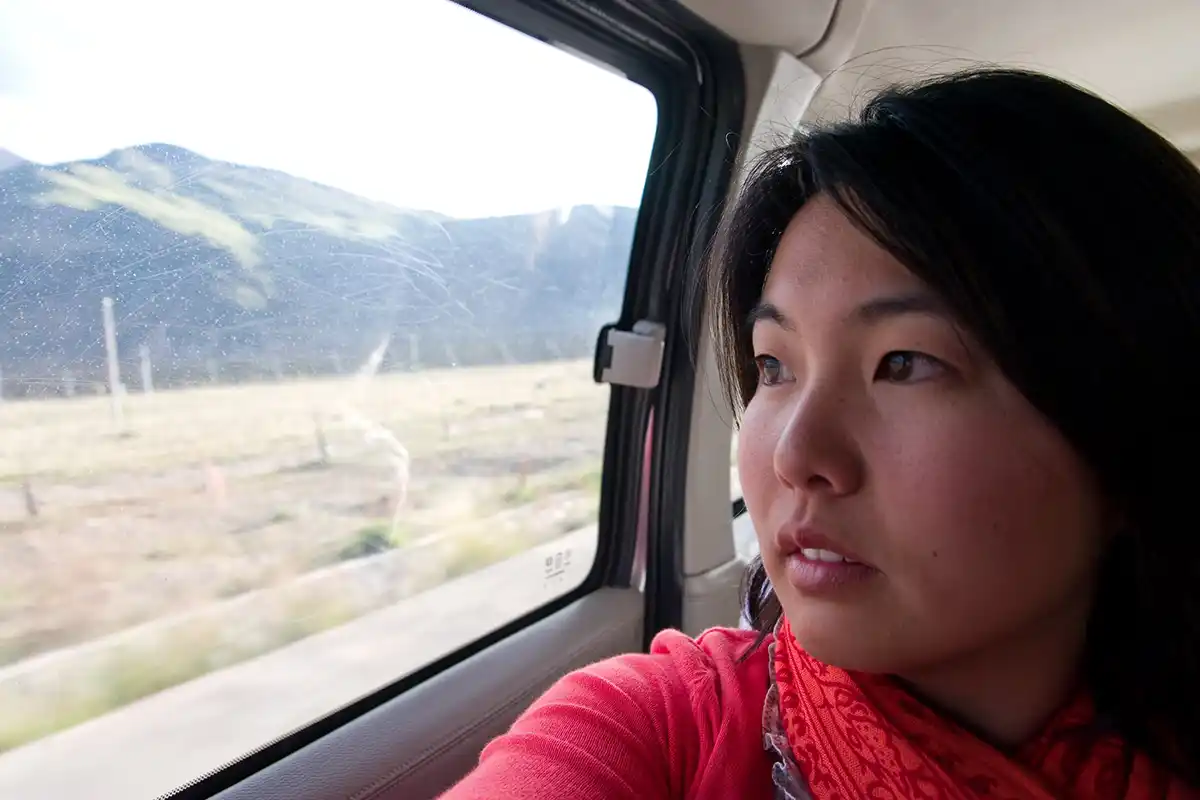
Additional Tips:
Altitude Sickness: Gradual ascent and proper acclimatization are crucial to avoid altitude sickness. Consider including lower-altitude destinations in your itinerary for acclimatization purposes.
Packing: Pack for extremes, including warm layers, even for summer trips due to high altitude and nighttime chills. Sturdy footwear is essential for trekking and exploring uneven terrain.
Responsible Tourism: Select travel companies dedicated to responsible tourism practices that reduce environmental impact and honor local communities.
Accommodation and Food
Venturing off the beaten path on the Tibetan Plateau means something other than sacrificing comfort or delicious food. Here’s a look at what awaits you:
Finding Your Tibetan Home Away from Home:
- Guesthouses: Many smaller towns in remote areas offer basic yet comfortable guesthouses. These family-run establishments allow visitors to experience Tibetan hospitality firsthand.
- Eco-Lodges: On the Qinghai Tibet Plateau, a rising trend of eco-lodges that focus on sustainability and incorporate local architectural styles is emerging. These lodges provide a unique combination of comfort and environmental awareness.
- Homestays: For a truly immersive experience, consider a homestay with a local family in a remote village. It allows you to experience daily life and traditional Tibetan culture.
A Taste of the Qinghai Tibet Plateau:
Tibetan cuisine offers a unique blend of flavors, including hearty stews, dumplings (momos), and yak meat. While international cuisine is available in larger towns, visiting local eateries is essential to experiencing the Tibetan Plateau.
- Local Restaurants: Small, family-run restaurants in towns and villages offer the most authentic Tibetan fare. Don’t be afraid to try new dishes – you might discover a favorite!
- Monastery Cafes: Some monasteries operate simple cafes serving basic meals to pilgrims and visitors. These cafes provide a budget-friendly option and a chance to soak in the monastery atmosphere.
- Street Food: To taste local life, sample street food from vendors in markets and towns. Popular options include skewered meats and steamed buns.
Treading Lightly: Responsible Tourism on the Tibetan Plateau
The Tibetan Plateau’s breathtaking beauty and unique culture attract travelers. However, venturing into this fragile ecosystem requires a commitment to sustainable practices. Responsible tourism is vital to preserving the natural wonders and rich cultural heritage for generations.
The Importance of Sustainable Travel:
The Tibetan Plateau’s environment is delicate. Melting glaciers, increasing tourist numbers, and improper waste management pose threats. Sustainable travel practices minimize these negative impacts and ensure the region’s long-term health.
How You Can Contribute:
Travelers can be powerful agents of positive change in the Qinghai Tibet Plateau. Here’s how you can contribute:
- Choose Responsible Tour Operators: Opt for companies committed to sustainable practices. Look for certifications like “Leave No Trace” and prioritize those that support local communities and conservation efforts.
- Minimize Waste: Pack reusable water bottles and avoid single-use plastics. Dispose of waste properly in designated bins.
- Respect Wildlife: Respect wildlife by staying safe from them and not altering their natural habitat.
- Support Local Businesses: Eating at local restaurants and staying in locally-owned guesthouses inject income directly into the local economy, foster a sense of ownership, and encourage sustainable practices within communities.
- Minimize Water Consumption: Be mindful of water usage, especially in arid regions. Short showers and refilling reusable water bottles are simple ways to conserve this precious resource.
- Respect Cultural Sites: When visiting monasteries and sacred sites, dress modestly and respectfully. Ask permission before taking photographs, and avoid touching religious artifacts.
The Benefits of Responsible Tourism:
By adopting responsible practices, you contribute to a positive cycle:
- Reduced Environmental Impact: Sustainable tourism helps minimize pollution, conserve water resources, and protect wildlife habitats.
- Empowering Local Communities: Supporting local businesses creates jobs and promotes cultural preservation.
- Enhanced Travel Experience: Responsible tourism fosters a deeper connection with the Tibetan Plateau and its people, creating a more meaningful travel experience.
Unveiling the Untamed Beauty: The Allure of Off-the-Beaten-Path Qinghai Tibet Plateau Travel
The Himalayan Plateau offers more than just breathtaking vistas; it’s a realm steeped in cultural heritage and untouched natural beauty. Venturing beyond the well-trodden tourist trail unlocks a treasure trove of unique experiences on off-the-beaten-path Qinghai Tibet Plateau adventures.
A World Awaits:
- Untamed Landscapes: Discover pristine lakes, tranquil valleys, and remote villages, experiencing the true essence of the Himalayan Plateau.
- Authentic Cultural Encounters: Interact with local communities who preserve ancient traditions, gaining a deeper understanding of Tibetan culture firsthand.
- Unforgettable Adventures: Challenge yourself with high-altitude treks, horseback riding expeditions, or cultural immersion experiences.
Exploring with Responsibility:
The Tibetan Plateau’s magic lies in its delicate balance. Responsible tourism practices are essential to ensure its preservation for future generations:
- Tread Lightly: Choose sustainable tour operators, minimize waste, and respect wildlife.
- Support Local Communities: Dine at local restaurants, stay in guesthouses, and buy handicrafts directly from artisans. This has a positive impact on the local economy and supports cultural preservation.
A Landscape Steeped in Culture:
The Tibetan Plateau isn’t just a collection of geographical wonders; it’s a living tapestry where culture and nature intertwine. Monasteries perched on windswept cliffs, prayer flags fluttering in the breeze, and the nomadic way of life reflect a profound connection to this extraordinary environment.
An Unforgettable Call:
The Tibet Off-the-Beaten Path is perfect for those seeking extraordinary adventures. It’s a place to push your limits, immerse yourself in a unique culture, and create lasting memories. So, are you ready to answer the call and explore the profound connection between the Tibetan people and the awe-inspiring landscape they call home? Responsible exploration unlocks the true magic of this special place.
